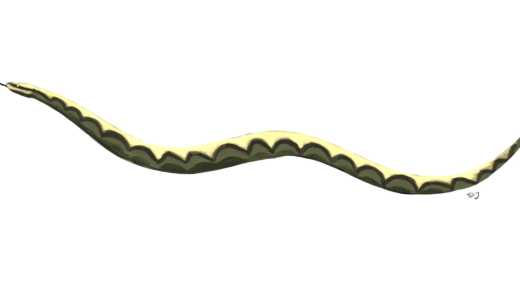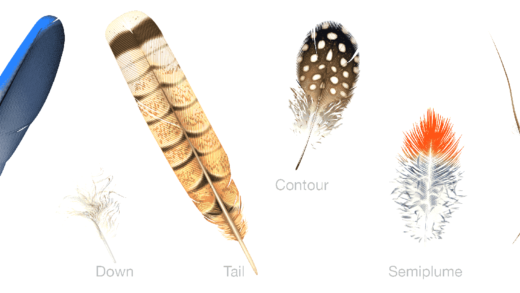Nightmare parasites like Leucochloridium paradoxum profoundly affect snails. They alter the snail’s physiology, behavior, and ecological interactions. Infected snails face health deterioration, increased predation risk, and shifts in local populations, showcasing the complex nature of host-parasite relationships.
What are Nightmare Parasites? Understanding their Impact on Snails
Nightmare parasites are a term used to describe certain parasitic worms that infect snails, creating a fascinating yet disturbing relationship. These parasites, particularly the Leucochloridium paradoxum, invade the snails’ bodies and manipulate their behavior to ensure their own survival and reproduction.
Once a snail becomes infected, the parasite often targets the eyestalks, transforming them into vibrant, pulsating structures that resemble caterpillars. This mimicry is not just for show; it serves a critical purpose. Birds, which are the definitive hosts for these worms, are attracted to the eyestalks, mistaking them for food. As a result, when a bird consumes the infected snail, the worms complete their life cycle inside the bird’s intestines.
The impact of these nightmare parasites on snails is profound. Infected snails exhibit altered behaviors, such as increased exposure to potential predators. This change not only affects the individual snail but also has broader implications for the ecosystem. Here are some key effects of parasitic worm infections on snails:
- Behavioral Manipulation: Infected snails become more active and less cautious, making them easier targets for birds.
- Physical Alterations: The parasites cause significant changes to the snail’s eyestalks, affecting its ability to navigate and evade predators.
- Population Dynamics: Higher rates of predation on infected snails can lead to shifts in local snail populations, impacting other species in the ecosystem.
Understanding these interactions is crucial for studying parasite-host dynamics and their role in ecosystems. The survival of these nightmare parasites hinges on their ability to manipulate their hosts effectively, showcasing nature’s complexity and the intricate web of life.
The Invasion: How Parasitic Worms Enter Snail Eyestalks
Nightmare parasites, specifically parasitic worms like Leucochloridium paradoxum, have a remarkable way of entering their snail hosts. The process begins when the adult worms release their eggs into the environment, often in moist habitats where snails thrive. Once the eggs hatch, the larvae must find a suitable snail to infect, and they do this through a series of clever adaptations.
The initial entry point for these parasites is the snail’s body, particularly targeting the eyestalks. The larvae use a method called penetration, where they enter the snail through its soft tissues. This process is aided by the snail’s natural behaviors; as they explore their surroundings, the worms take advantage of any openings in the snail’s body. Once inside, the larvae migrate towards the eyestalks.
Upon reaching the eyestalks, the parasitic worms undergo significant changes. They start to manipulate the snail’s biology, altering the structure of the eyestalks to become more vibrant and pulsating, mimicking a caterpillar. This mimicry is essential for the survival of the worms as it attracts birds, which are the final hosts in the life cycle of these parasites.
The transformation of the snail’s eyestalks serves a dual purpose: it helps the worm to complete its life cycle while also affecting the snail’s behavior. Infected snails become more exposed to predators, as they are drawn out of their shells due to the bright, caterpillar-like eyestalks. Consequently, this manipulation not only ensures the survival of the worms but also has broader implications for the ecosystem.
- Entry Mechanism: The larvae penetrate the snail’s body, targeting soft tissues.
- Behavioral Change: Infected snails are more active and visible to predators.
- Implications for Ecosystem: Increased predation affects local snail populations and their predators.
In summary, the invasion process of nightmare parasites into snail eyestalks is a complex interplay of biology and behavior. Understanding this process is crucial for grasping the broader impacts of parasitic worms on ecosystems and the intricate relationships between hosts and parasites.
The Aftermath: Consequences for Snails After Worm Infection
Nightmare parasites lead to significant consequences for snails once they have been infected. These parasitic worms, particularly Leucochloridium paradoxum, do not just inhabit the eyestalks of their hosts; they alter the very essence of what it means to be a snail. Once a snail is infected, several processes unfold that directly impact its health, behavior, and even its survival.
Firstly, after infection, the snail experiences a range of physiological changes. The presence of the worm causes inflammation and stress within the snail’s body. This leads to a weakened immune response, making the snail more susceptible to other infections and diseases. Additionally, the energy demands of the parasite can drain resources from the snail, leading to malnutrition and reduced growth rates.
Moreover, the alteration of the snail’s eyestalks into vibrant, caterpillar-like structures is not merely cosmetic. This transformation is designed to attract birds, the primary predators of infected snails. As a result, infected snails often become more exposed to predation, significantly increasing their chances of being eaten. This altered behavior is a direct manipulation by the parasite, showcasing the intricate relationship between host and parasite.
- Health Deterioration: Infected snails suffer from weakened immune systems, increasing their vulnerability to other diseases.
- Behavioral Changes: The parasite-induced changes lead to riskier behaviors, exposing snails to greater predation.
- Ecological Impact: Higher predation rates on infected snails can shift local population dynamics, influencing the broader ecosystem.
In conclusion, the aftermath of parasitic infection in snails extends beyond the individual host. The consequences of nightmare parasites illustrate the complex interactions within ecosystems and how one organism can fundamentally alter the survival and behavior of another. Understanding these dynamics is essential for grasping the broader implications of parasitic relationships in nature.





Comments are closed.